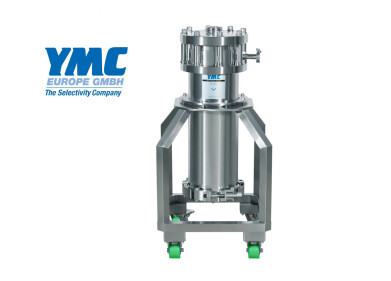Columns (LC)
Does Carbon Load Affect the Retention Times from Your Columns?
Jul 30 2018
Retention time is one of the key elements in a chromatographic analysis. It gives an analyst information about the components that are eluted from the column — basically, how long a particular component remains on the column, the time from injection to detection.
Retention time can be used in qualitative analysis as a means of identifying each of the peaks in a chromatogram — especially when there is an internal standard used and the concept of relative retention time is used. But analysts need to know what factors can affect retention time.
Influencing column retention time
The retention time for a compound eluted — extracting a compound from the column by washing with a solvent — from a column is subject to many factors that can cause a variation in the retention time. These include:
- the flow rate of the carrier gas used,
- the condition of the column — as a column is used it can absorb impurities and can degrade,
- sometimes a simple column fix is to cut the end of the column off — shorter columns will probably have faster times, and
- inconsistencies in oven and column temperatures between injections.
But there is another factor that some chromatographers say can affect retention times — carbon load of a column.
Carbon load — heavy columns?
There are many different choices to make when choosing a chromatography column. Besides obvious parameters like length and internal diameter, there are also chemical and physical properties of the column coatings to consider. Which type of stationary phase to use — polar or non-polar coatings, and film thickness are some of the factors affecting retention time. Column factors are discussed in this article, How to Determine Extra Column Dispersion and Extra Column Volume. Could carbon loading on a column affect retention time?
Carbon load refers to the percentage carbon content of the silica in the stationary phase — the silica bonded to the inner walls of the column. It is reported that a higher carbon load gives a more hydrophobic surface and can affect how non-polar and polar compounds react with the column coating — parameters that might be beneficial for some types of analysis.
A chromatography myth?
Some analysts believe that the carbon loading of a column relates to the retention times from the column, others believe it to be a myth. Researchers from Waters Corporation have carried out a simple analysis to see if the myth is true. They compared columns with different carbon loads under similar conditions.
The results showed no correlation between percent carbon load and overall retention. The columns tested had percent carbon loads between 5% and 18%. What does affect the overall retentivity of a column is the phase ratio — which includes the pore volume and overall surface area. If columns with the same carbon load but different phase ratios are compared, the columns with higher phase ratios have longer retention times.
Events
May 11 2025 Vienna, Austria
May 18 2025 Tempe. AZ, USA
May 21 2025 Birmingham, UK
Jun 01 2025 Baltimore, MD, USA
Jun 15 2025 Bruges, Belgium














